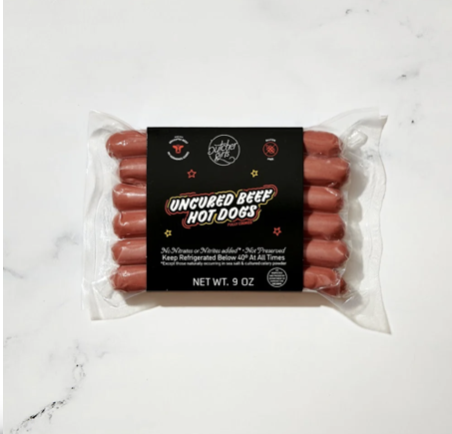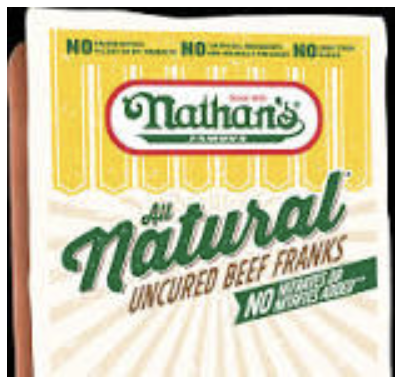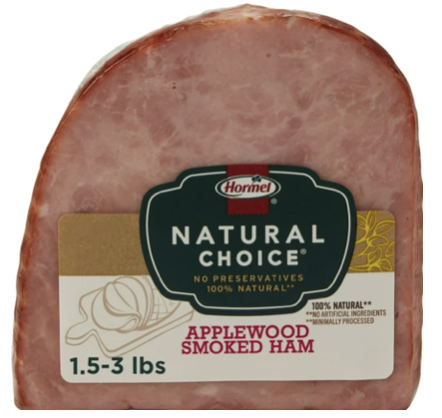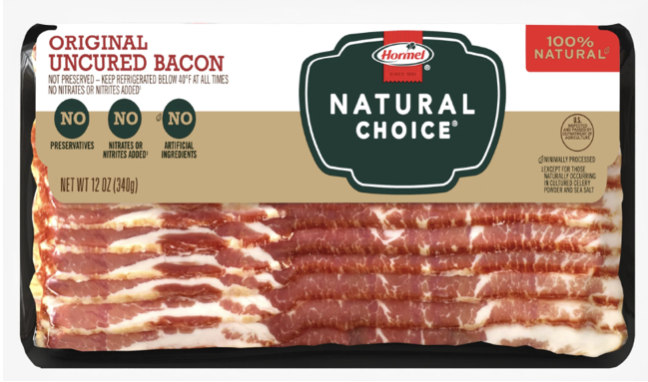Cured and Uncured meats – the terms are confusing, but the explanation is simple enough.
Today we will discuss the differences in flavor, texture, and appearance of cured and uncured meats. Armed with information gained today, you may wish to set up your own experiment to see which meat comes out on top.

My wife’s father was a butcher. She grew up in the business and understands from her experience working with her father that the curing process involved adding salt and other chemicals such as sodium nitrate and sodium nitrite. These ingredients were introduced into the meat either in a brine or with some sort of a dry rub. This was done to preserve the meat, enhance the flavor, and prevent bacterial growth. The process also extended the shelf life of the meat.
Her dad’s shop (called a ‘meat locker’ back in the day, but we recognize today that term has a different connotation) was especially renowned for its cured meats such as ham and bacon, both of which won top prizes at the Iowa State Fair.
A few years ago when ‘uncured meat’ became a ‘thing’ we were both confused as to why anyone in their right mind would want meat that had not gone through the process designed to make it safe to eat and more flavorful. We avoided it altogether.
We didn’t understand that uncured meat was actually ‘cured’, but through the use of a different technique using natural curing agents derived from such ingredients as celery powder, celery juice, sea salt, and beet extracts rather than artificial preservatives. In the USA, the United States Department of Agriculture (USDA) requires companies to label preserved meats as “uncured” and “no nitrates or nitrites added” if they use natural nitrate or nitrite sources. (But, this is changing.) This was so typical of our government, we thought, that they chose to use the confusing and misleading term “uncured” rather than a term that would more accurately describe the process. It took the two of us about four seconds to come up with what we thought might have been a more appropriate term – “naturally cured”.
Meat, such as bacon, in U.S. stores labeled as “uncured” is actually cured. The curing is done with vegetable-based nitrate/nitrite curing agents rather than powdered nitrate/nitrite. This is most typically celery juice or celery powder, but beets and other things can be used. Generally, this “uncured” bacon actually has a greater concentration of nitrate/nitrite than normal “cured” bacon; it just comes from a vegetable source. Thus, it generally can taste just like normal “cured” bacon. However, the “uncured” bacon often seems to be processed differently from typical supermarket bacon, perhaps brined or even dry-rubbed, rather than injected. This can alter the texture significantly, which will be particularly noticeable if sliced thick (which it often seems to be). If only smoked lightly (or even not smoked at all), it can taste more like “ham” or “pork” than normal supermarket bacon. So, many of the differences people cite for “uncured” bacon are actually due to processing differences, not a lack of curing agents.
Armed with that bit of knowledge we were not only relieved that the product was actually cured and therefore, safe, but we were curious as well if the food experience in terms of taste and texture would be the same. We had to test this for ourselves.
I love hot dogs and consider myself an HDC (Hot Dog Connoisseur). This lofty designation surely gave me an exalted platform from which to espouse an opinion. The two of us voted on my candidacy as spokesperson, and I won.

We selected a package of uncured hot dogs, took them home, and cooked a few. When I say ‘cooked’, that term depends on what mood (or time circumstance) I’m in. For a quick fix, my go-to method is the microwave oven. A couple of more time-consuming methods include boiling or pan frying, and the most involved (and my favorite method) is grilling over an open fire.
The two of us were anxious to get the results of our experiment and so the microwave method was employed. The results were “Drum Roll, Please” … disappointing.
The dogs were flavorless and the texture was ‘off’.
Because I am an HDC, I wasn’t ready to hand over a verdict on uncured meat based on this single experience. We had to try again. For one thing, I knew that even with cured hot dogs there was a very wide range of flavor and textural differences. It took me years to crown my own personal champion (Nathan’s Restaurant Style) in the hot dog playoffs. I had to go back to the store and grab a package of Nathan’s Natural Uncured Franks for evaluation.

We replicated our cooking method and the results were…… disappointing. Both experiments were successful if you consider that, like Thomas Edison, we discovered what did not work. The remaining uneaten contents of both packages were discarded. I know that this sounds wasteful (because it was) but we could not bring ourselves to offer these inferior-tasting products up to anyone else, so into the trash they went.
Uncured ham and bacon were the next two taste experiments. We tested our favorite smoked ham brand, Hormel. My butcher, father-in-law retired decades ago so only a pleasant memory remains of his award-winning ham, but my wife and I have come to trust Hormel with delivering the taste, texture and quality we seek in a ham. We didn’t want to repeat the mistake we made with the unknown brand of hot dogs, so we went for Hormel’s Natural Choice Applewood Smoked Ham.

We didn’t like it. But, we ate it. We ate the entire package, avoiding the wastefulness of the hot dog caper. It took several meals to work our way through the package. We were glad to see the bottom of the package.
I’d like to say that we were undeterred in our quest to prove that uncured meat is every bit as tasty as the cured variety, but I can’t. We were, in fact, deterred. But we pressed on anyway. This time to bacon.

Bacon holds a special place in the universe. It is a flavor bomb that is fantastic alone, but when combined with other ingredients ushers forth a near-religious culinary experience.
We thought, surely, nothing can spoil a good strip of bacon. We were wrong. In the spirit of thriftiness, we used the entire package. We ate BLTs, bacon cheeseburgers, and bacon and eggs. In the end, we yearned for our regular, cured, bacon.
The bottom line? The main difference between cured and uncured meat has to do with the fact that cured meat uses artificial preservatives while uncured meat uses natural preservatives. Cured meat also generally has a longer shelf life than uncured meat. Nitrites, while naturally occurring in many vegetables, may pose a health risk when used to cure meats. Compounds called “nitrosamines” form when nitrites and protein interact, and research shows these compounds may be cancer-causing carcinogens.
If it comes down to the choice between avoiding meat with “nitrosamines” – a possible cancer-causing compound and superior flavor, we all have to make a choice.
To help make that choice a better-informed decision, I’ll leave you with this statement from the US Food and Drug Administration that was made to the presence of nitrosamines in drugs:
“FDA does not expect nitrosamines to cause harm when ingested at low levels. Nitrosamine impurities may increase the risk of cancer if people are exposed to them above acceptable levels and over long periods of time, but a person taking a drug that contains nitrosamines at, or below, the acceptable daily intake limits every day for 70 years is not expected to have an increased risk of cancer.”
The World Health Organization recommends an acceptable daily intake of nitrate to be 8.157 mg/pound of a person’s weight. For example, a 100 Lb person could safely consume 815.7 milligrams of nitrate daily. Okay, now that we know that figure we can calculate our own personal limit. Then, we need to know the nitrate level of the cured meats we eat.
Hot dogs are one of the most processed sources of meat on the market. The average hot dog contains about 50 mcg of nitrites per 100 g of meat, which carries about 9 mg of nitrates. 100 g is equal to .22 pounds – about 1/4 pound. This means that a pound of hot dogs would offer up 36 mg of nitrate. That 100 pound person would have to consume 22 pounds of hot dogs a day to exceed the WHO recommended daily intake. That is unlikely, wouldn’t you say?
It all comes down to what the Greek philosopher Socrates is credited with saying,
“All things in moderation, including moderation”.

In conclusion, curing can be different depending on where you live, or what flavors the person doing the curing likes to use. There will be salt involved in the curing, and again, depending on where you live and the customs/regulations involved, and often some source of nitrate or nitrite, to prevent some nasty bacteria. A pleasant side effect of these additions is the deepening of the red/pink color many of us associate with bacon, though some of the redness of the meat is based on the diet of the animal, too.
(Whether from saltpeter, or curing salt (a purposely colored curing salt, to distinguish it from white sodium chloride), or celery juice, which contains a high quantity of the same chemicals, the nitrates and nitrites are added in very tiny quantities. They don’t need much, and are usually in smaller concentrations than are found naturally in water and in leafy green vegetables)!
What makes the cures taste different (besides the saltiness) is the other kinds of herbs, spices, and sweeteners used in the cure mixture, and whether or not the bacon is smoked, to add additional flavors.
Texture-wise, the main difference between cured and uncured bacon is that the uncured bacon will have a much higher water content than the cured bacon, so the fat will not be as dense.
Now, you know more than most people about the differences between cured and uncured meats. Perhaps you will want to set up your own group of experiments to determine your personal preferences, then you too may become an HDC.

Welcome to 3-Minutes A Day University, where every day you can learn a little about a lot of things in three minutes or less. We help you expand your knowledge and understanding of the real world and 3-MAD University is tuition-free. Our wide-ranging syllabus includes fascinating insight into topics including Health and Medicine, Science, Sports, Geography, History, Culinary Arts, Finance and the Economy, Music and Entertainment, and dozens more. You will impress yourself, your friends and your family with how easy it is to learn facts and perspectives about the world around you. One topic you will never find covered is politics. We hope you enjoyed the previous three minutes.
Was this email forwarded to you? Subscribe Here.
© Copyright 2024. 3-Minutes A Day University All Rights Reserved. Unsubscribe

